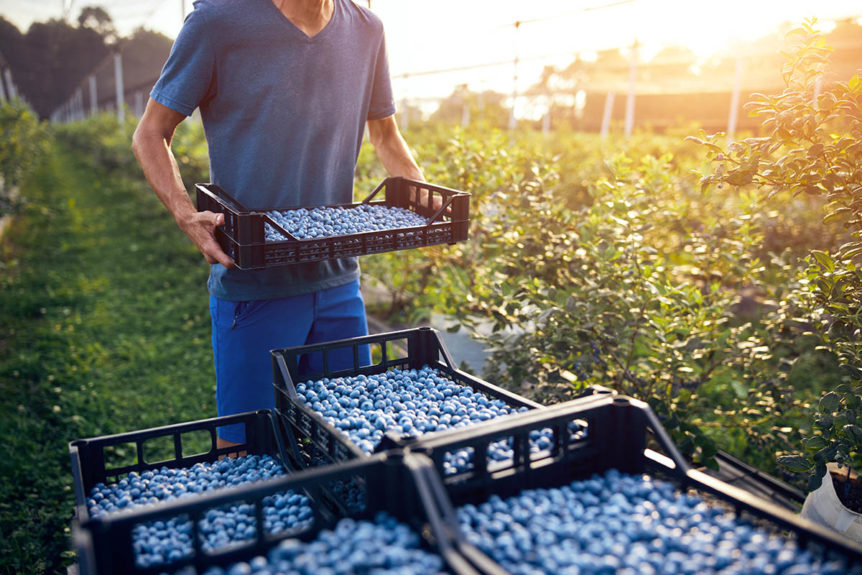
By Sabrina Halverson
The U.S. Department of Agriculture (USDA) is upping its investment in specialty crops for 2024 with key announcements in the areas of research and trade.
USDA is investing $70.2 million in the Specialty Crop Research Initiative to support 21 research and Extension projects. Deputy Secretary of Agriculture Xochitl Torres Small announced the funding and described the kinds of projects that will be funded.
“The awarded projects addressed key challenges of national, regional and multi-state importance to the food and agriculture industry, including conventional and organic food production systems,” she said. “The Specialty Crop Research Initiative prioritizes projects that improve crop characteristics, manage threats from pests and diseases, improve production efficiency, profitability and technological innovation and mitigate food-safety hazards.”
Improving Competitiveness
The grant program is administered by USDA’s National Institute of Food and Agriculture. Torres Small said it is part of a new effort to further support the U.S. specialty crop sector and increase the competitiveness of its products.
A Michigan State University project will increase competitiveness and sustainability of the U.S. blueberry industry by developing methods to improve fruit quality and reduce crop loss. “The blueberry industry has these challenges when it comes to being competitive globally, so this is an opportunity to invest there,” said Torres Small.
She also discussed the importance of local Extension agents.
“One of the things that USDA does that I’m most proud of is linking the research to the implementation, and Extension service is such a crucial part of that,” Torres Small said. “Cooperative Extension agents are trusted partners who live in the communities they serve. Whether it’s learning how to make your pecan meatier in Georgia or addressing challenges with citrus greening in Florida or water management in Arizona, all of these are opportunities to connect the research that’s being funded by USDA to the work on the ground.”
Resource Directory
USDA conducted a department-wide review of its current services and programs that support the specialty crop industry and compiled this information into a Specialty Crops Resource Directory. Torres Small said it contains a comprehensive snapshot of USDA’s resources and services for specialty crop producers and businesses.
In addition, over the next several months, USDA leadership will engage directly with the specialty crop industry and producers to gain feedback on how the department can better address gaps in services and better meet the industry’s needs.
“Now we’re turning to the industry for next steps,” she said. “We want to be able to figure out where the gaps are, so we can help support specialty crops and products. All U.S. specialty crop producers, stakeholders and businesses are encouraged to submit comments on how USDA can better support and meet the needs of the industry.”
Promoting Trade
While speaking at the National Association of Farm Broadcasting annual convention in November, Alexis Taylor, USDA under secretary for trade and foreign agricultural affairs, discussed trade missions that could be particularly beneficial to the nation’s specialty crops industry. In an interview with Specialty Crop Grower, Taylor said funding from the USDA will also help the industry with trade challenges.
“In addition to some market development work, we’re providing $100 million to support the specialty crop sector in some of the unique challenges they have to export products around the world,” she said. “Oftentimes, while they’re high-value agricultural sectors and part of the state’s agricultural economy, they’re very small. They could be small acres or a small number of producers, and so they don’t have the sheer amount of resources that some of the larger commodity groups do.”
She said the $100 million from the Regional Agriculture Promotion Program will address some of the technical barriers to trade that the specialty crop sector experiences, such as transportation issues for highly perishable crops.
In addition to the funding, Taylor is excited about several trade missions planned for 2024 that will include opportunities for businesses within the specialty crop sector. One such trip is planned for April.
“One in particular that I’m really excited for, for our specialty crop growers, is India. Just this year, we were able to lower tariffs on nine products,” she said. “Prior to retaliatory tariffs being placed on the U.S. apple, it was our No. 1 market, and today effectively they’re zero. So, we’ve been able to reduce that tariff.”
In addition to apples, India dropped retaliatory tariffs on chickpeas, lentils, almonds and walnuts and reduced tariffs for turkey, duck, blueberries and cranberries.
Taylor said one of the key reasons for planning a mission trip to India is to help specialty crop businesses rebuild relationships in that market. She encouraged specialty crop businesses to consider participating in that trade mission and others planned by the USDA. The other trade missions include Vietnam, which is opening its market for U.S. grapefruit growers, Canada, Mexico, Japan, Korea and Brazil.










